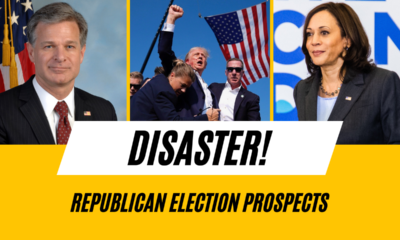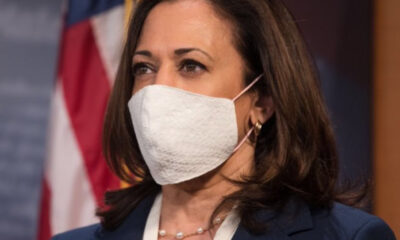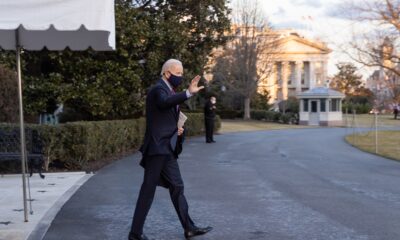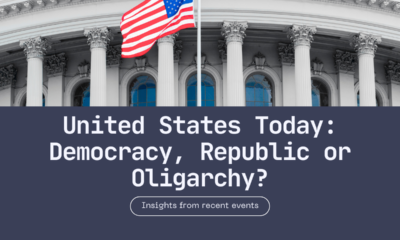Guest Columns
Making Sense of the Haley Vote in the Philly Suburbs
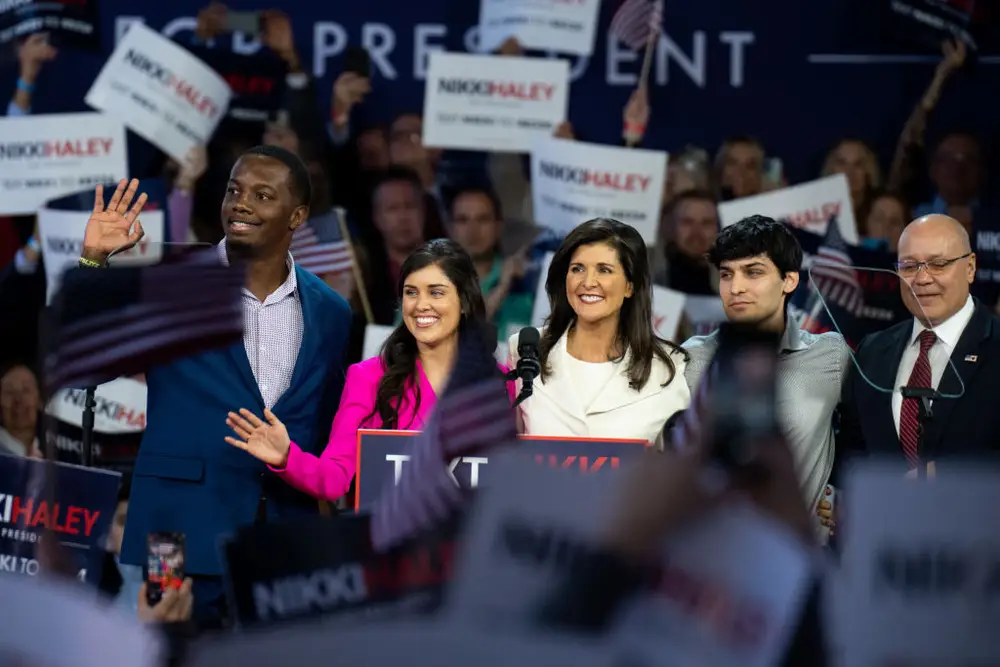
Nikki Haley and her surprise finish in the Philly Burbs
Spring has sprung in the Philadelphia suburbs. Little League is back in full swing, and the area’s many beautiful walking trails are getting their use. Life is good here – and stable – unlike many other places in the country, at least according to national news. That disconnect is ironic, given this region’s outsized political importance. As a critical area nestled within a critical swing state, the Philly suburbs might hold the keys to the White House this November. But whatever the Biden and Trump campaigns have to offer, it’s not exactly “stability.” So, many voters in one of the most electorally powerful enclaves in the nation will be holding their noses come November, and the question is which candidate they’ll decide stinks less.
Which is why the results from Pennsylvania’s Republican primary late last month raised eyebrows. Nikki Haley made an unexpectedly strong showing. After dropping out of the race in early March, she earned roughly 158,000 GOP primary votes in Pennsylvania – over 16% of the vote, and well over three times Donald Trump’s 2016 margin of victory in the state. Haley’s vote in the Philadelphia suburbs (the “collar counties” that ring the city) was even more eye-popping: she earned 25% of the vote in both Montgomery and Chester counties. That 25% number clears Haley’s average in all of the state primaries to date (21%), which includes all the primaries in which she was still an active candidate.
A Protest Vote At Its Core
The message that this sizable minority of Republicans sent is clear: they’re deeply unhappy that Donald Trump is going to be their party’s nominee for a third straight election cycle. What it means for November, however, is anyone’s guess.
A number of Pennsylvania Republican primary voters told me that they cast their ballots for Haley to register their displeasure with Trump. Robert Nix, a Republican of 44 years and a Philadelphia attorney now active in “Republican Voters Against Trump,” said that his vote was a “protest vote.” He added that if Haley had endorsed Trump upon dropping out, he’d have written in Liz Cheney.
Jack Merritt, a senior citizen from Chester County and a lifelong Republican, stressed similar points: Trump “is not the sort of human being I want representing my country and community,” says Merrit, which is why he registered “a protest vote” to “express [his] dissatisfaction with Trump.” Linda Rooney of Delaware County made similar points: she voted for Haley to “register [her] dissent” and to make clear that she’s “not a blind follower of Trump.”
In Delaware County
Bill North of Delaware County agrees. Though North had held his nose and voted for Trump in the past, Trump’s election denialism in 2020 “pushed [North] to the edge,” and then January 6 “pushed [him] over the cliff” because “character still counts.” So, North voted for Haley in the primary; he’d have “voted for almost anybody over Trump who’s reasonably conservative.”
Leading anti-Trump conservatives in the area share similar feelings. Craig Snyder, a former chief of staff to the late U.S. Sen. Arlen Specter, told me that he sees the Haley vote in Pennsylvania as “a clear and powerful statement that the Republican Party should not be defined by Donald Trump and his movement.” Haley voters in Pennsylvania have either a “memory or a vision of a different kind of Republican Party.”
Digging into the Data in Montgomery County
Precinct-level data provides a window into who these Haley voters are – and how they might vote come November. I assessed the tally for all 426 precincts in Montgomery County, one of Philadelphia’s four collar counties. Once praised by Ronald Reagan as a Republican bastion, Montgomery County (known as “MontCo”) has become something of a Democratic stronghold in recent years. Joe Biden won over 62% of the MontCo vote in 2020.
Haley won 25% of the GOP primary vote in MontCo. Of the county’s 426 precincts, she cleared that 25% mark in 205. One striking statistic: of those 205 precincts, all but three went for Biden in the 2020 general election. That doesn’t necessarily tell us how these particular Haley voters have been voting or will vote this November, but it does establish that Haley’s support was strongest among suburban Republicans who live alongside Democrats.
Is Haley a proxy for the Democratic nominee?
In addition, Haley cleared her 25% Philly suburban average in a sizable number of MontCo precincts (35 total) in which Mitt Romney won in 2012 and Biden won in 2020. That might be cause for real concern for the Trump campaign. These particular Haley voters – 11,536 voters in total, equal to 26% of Trump’s total margin of victory in Pennsylvania in 2016 – seem potentially responsible for their precincts’ recent shift into the Democratic fold during the Trump era. The fact that they took the time to cast their ballots in a primary for a candidate who’d dropped out of the race more than a month earlier might indicate that they don’t intend to vote for Trump in the general election.
In fact, these precincts fit the mold of what one instinctively envisions when thinking of a Romney-Haley Republican willing to defect to the Democrats back in 2020: well-off, well-educated, and looking for some semblance of stability in national politics. In the words of a former Haley staffer, these voters detest “drama and chaos.” That makes sense: life is particularly good in their neck of the woods. A brief search of Zillow in these stalwart Romney-Biden-Haley precincts routinely yields homes worth over $1 million.
Wealthy RINOs?
Consider one precinct situated in Upper Dublin, the thirty-third richest township in Pennsylvania. After that precinct gave Romney 53% of its vote in 2012, Clinton 59% in 2016, and Biden 64% in 2020, 34% of Republicans there turned out to vote for Haley in last month’s Republican primary.
That Upper Dublin precinct is no outlier. In nearby Whitemarsh, one precinct gave 51% of its vote to Romney back in 2012 before turning to Democrats during the Trump era (58% for Clinton in 2016 and 63% for Biden in 2020). Last month, a whopping 41% of Republican primary voters there cast their ballots for Haley. Precincts peppering nearby Horsham and Lower Gwynedd followed a similar pattern.
What Will Happen in November?
The critical question now is what these voters will do this November. Having blown off some steam in the primary, will they return to the Republican fold and vote for Trump in the general election? Or is their disgust with Trump so strong that they’ll cross party lines and vote for Biden (again)? Or might they stay home?
It’s an open question. According to veteran GOP political consultant Christopher Nicholas, “The Trump campaign’s Nikki Haley issue isn’t going away. Those voters are clearly up for grabs, as are Democrats disaffected by Biden, especially because of what they see as his foreign policy missteps.” A former Haley staffer believes that “it’s near impossible to win a swing state without earning the support of Haley Republicans.”
From Haley to either Biden or write-in
Kenneth Scheffler, executive director of Haley Voters for Biden, believes that the “same principles” that motivated Haley Republicans in April should lead them to vote for Biden come November. But Scheffler admits that “a lot are undecided” as of now. For example, Jack Merritt shared that though he’s “highly unlikely to vote for Donald Trump” in November, he’s not sure he can bring himself to vote for Biden. Bill North is a hard “no” on Biden; after having voted for Trump in 2016 and 2020, North plans on writing someone in this November. Similarly, Linda Rooney “most likely will not vote for Biden,” as she weighs either writing in Haley or holding her nose and voting for Trump. Robert Nix is much more open to voting for Biden.
It seems that what these voters want most is stability. Joe Biden ran as the stability and normalcy candidate back in 2020, but it’s not clear if that message will resonate again in 2024, as war rages in the Middle East and campuses descend into chaos just as a national crime wave abates. That said, Trump’s campaign – alongside his stated plans for a second term in the Oval Office –is predictably no promise of stability, either.
The fact that the 2024 election will revolve around issues that were less central to these voters’ calculations back in 2020 presents an additional unknown.
The anti-Semitism question
Consider anti-Semitism. It’s unclear how Hamas’s terrorist attack of October 7 and the subsequent dysfunction on college campuses will affect these voters’ decisions come November. But it’s worth noting that according to the Jewish Federation of Greater Philadelphia, Upper Dublin, Whitemarsh, Horsham, and Lower Gwynedd are some of the most Jewish areas in the Philadelphia region. If these Jewish suburban voters conclude that the Biden administration hasn’t done enough to combat rising anti-Semitism and to support Israel, they might be less apt to pull the lever for Biden – even if some still can’t bring themselves to vote for Trump. And initial reporting indicates that Biden’s recent backpedaling on support for Israel might alienate anti-Trump Republicans.
Did Trump make abortion less important, or more?
Abortion provides another somewhat untested issue. Abortion has long played a role in national politics, but this is the first national presidential election of the post–Roe v. Wade era. Roe was overturned in 2022 in the Supreme Court’s Dobbs v. Jackson Women’s Health Organization decision. Democrats have had electoral success on the abortion issue since. The extent to which abortion will shape the vote of the heavily Catholic Philadelphia suburbs this November is unclear. Prior to Dobbs, abortion and Supreme Court nominations were key reasons that many Trump voters, including Catholics, voted for him despite their misgivings. Now that the Court has overturned Roe and Trump disclaims any intention to regulate abortion at the national level, it’s not clear just how loyal pro-life voters otherwise unenthused by Trump will remain to him (even if they won’t defect to Biden).
What Haley voters in the Philadelphia suburbs and beyond decide to do in the voting booth is one of November’s great questions. For now, they’ve registered their dissent. It remains to be seen whether and how Joe Biden and Donald Trump respond.
This article was originally published by RealClearPennsylvania and made available via RealClearWire.
Editor’s Note:
Pennsylvania has closed primaries, and takes steps to ensure that Party members only vote in their respective primaries. But those steps amount only to requiring re-registration of any voter who wishes to “change parties.” Pennsylvania sets voter registration deadlines at fifteen days before the next election.
Whether those steps are sufficient to stop determined and shifty Democratic crossover voters and “crossover machines” is an open question. Nikki Haley dropped out of the race on March 6, and the primary took place on April 23. Therefore the Pennsylvania Democratic Party could easily have built a “crossover machine” to re-register several Democrats as Republicans and then re-re-register then as Democrats after Primary Day. Whether anyone did that, might require a private investigator to determine reliably. The most diligent engine search on Result Hunter yields no results that could help answer this question. The Pennsylvania Department of State says they have information on Party change applications. But if that’s true, then it has proved impossible to locate.
Pennsylvania is a “Motor Voter” State, that registered people automatically when they get or renew their drivers’ licenses. The Philadelphia public-television station insists that this “automatic voter registration” does not favor one party over the other. Nevertheless, the Pennsylvania Republican Party has a lawsuit pending in federal court to require an affirmative opt-in.
Note also that Pennsylvania voters don’t even have to show ID after their first election in a new precinct.
The author, in conducting exit interviews, asked voters their affiliation. But he did not say what steps he took to verify any voter’s statements.
Thomas Koenig, resident of Oreland, Pennsylvania, is a student at Harvard Law School and a contributing editor to American Purpose. His articles have appeared in The Dispatch, National Review Online, Lawfare (Substack), Real Clear Pennsylvania, The Bulwark, CNN, and The Washington Free Beacon.
-

 Executive4 days ago
Executive4 days agoSecret Service chief gets no solace
-
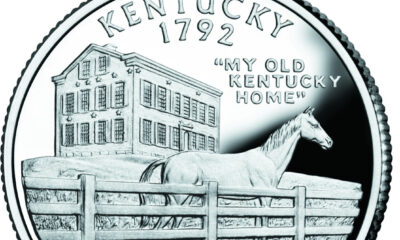
 Executive3 days ago
Executive3 days agoWaste of the Day: Louisville Taxpayers Pay Nearly $600,000 For Empty Building’s Maintenance, Security
-

 Guest Columns4 days ago
Guest Columns4 days agoFear Itself: Democrats’ Favorite Strategy Caused Their Current Chaos
-
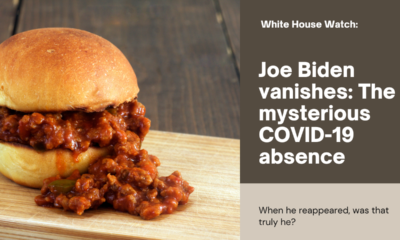
 Executive3 days ago
Executive3 days agoWhere is Joe Biden – or Jill?
-

 Executive1 day ago
Executive1 day agoWaste of the Day: Throwback Thursday: Cities Used Crime Prevention Funds on Soccer Games, Paper Shredding
-
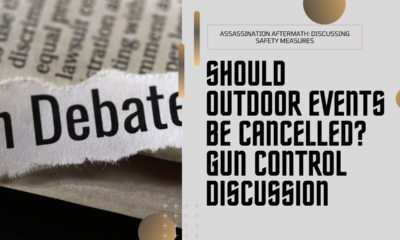
 Executive2 days ago
Executive2 days agoFacile and politically motivated suggestions
-

 Civilization4 days ago
Civilization4 days agoBuild Iron Dome in the United States To Prepare for Israel’s Worst Day
-

 Executive4 days ago
Executive4 days agoThe Emerging GOP Plan To Beat Kamala Harris



